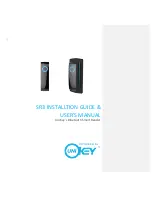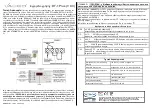
Introduction
1378
SLAU723A – October 2017 – Revised October 2018
Copyright © 2017–2018, Texas Instruments Incorporated
LCD Controller
20.1 Introduction
The LCD controller includes the following features:
•
Character-based panels
–
Support for two character panels (CS0 and CS1) with independent and programmable bus timing
parameters when in asynchronous Hitachi, Motorola, and Intel modes
–
Support for one character panel (CS0) with programmable bus timing parameters when in
synchronous Motorola and Intel modes
–
Can be used as a generic 16-bit address and data interleaved MPU bus master with no external
stall
•
Passive matrix LCD panels
–
Panel types including STN, DSTN, and C-DSTN
–
AC bias control
•
Active matrix LCD panels
–
Panel types including TN TFT
–
1, 2, 4, or 8 bits per pixel with palette RAM and 16 or 24 bits per pixel without palette RAM
•
OLED Panels
–
Passive matrix (PM OLED) with frame buffer and controller IC inside the panel
–
Active matrix (AM OLED)
•
Bus mastering capability from either system SRAM or EPI memory.
20.2 Block Diagram
The LCD controller consists of two independent controllers, the Raster Controller and the LCD Interface
Display Driver (LIDD) controller. Each controller operates independently from the other and only one of
them is active at any given time.
•
The Raster Controller provides a synchronous LCD interface. It provides timing and data for constant
graphics refresh to a passive display. It supports a wide variety of monochrome and full-color display
types and sizes by use of programmable timing controls, a built-in palette, and a gray-scale serializer.
Graphics data is processed and stored in frame buffers. A frame buffer is a contiguous memory block
in the system. A built-in DMA engine supplies the graphics data to the Raster engine which, in turn,
outputs to the external LCD device.
•
The LIDD controller provides an asynchronous or synchronous interface depending on the operating
mode. The LIDD controller provides full timing programmability of control signals (chip selects,
read/write strobes, enable, direction), and output data.
shows the LCD controller details. The raster and LIDD controllers are responsible for
generating the correct external timing. The LCD DMA engine provides a constant flow of data from the
frame buffers to the external LCD panel through the Raster and LIDD controllers. In addition, CPU access
is provided to read and write registers.
shows the LCD block diagram. For more information on the Raster controller data path, see
















































